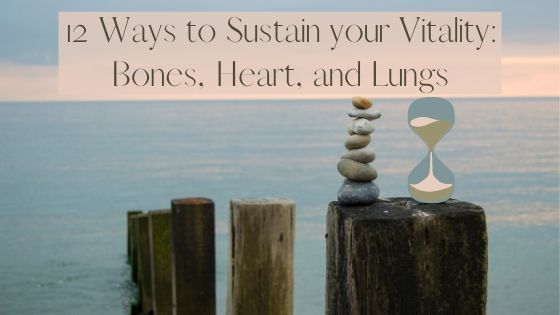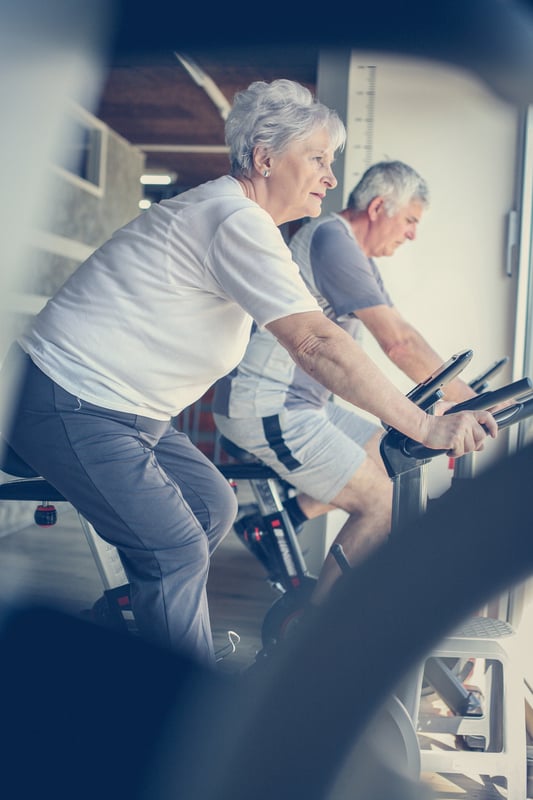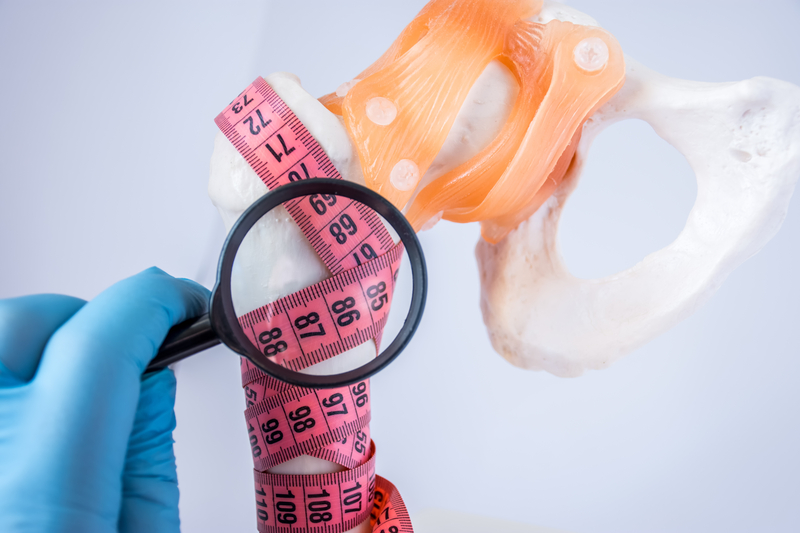
Changes are occurring within us, both physically and emotionally, our entire lives and yes, one day those changes become stressful and even hard to manage, we call it old age.
Vitality you once had as a young man or woman seems to be fading away, however, it is not gone. This does not go without saying that the aging process can be physically and mentally exhausting even painful, but there are measures you can take to manage the changes that are happening in your body and mind.
In this article, we will take an in-depth look at a few of the changes occurring in your bones, heart, and lungs as you age.
Once you understand some of these changes, you can begin implementing goals into your daily life to make the most out of the vitality in you.
{{cta('fa8abc2a-1e88-4fa3-82fd-1cb5b9ed43b2','justifycenter')}}
Your aging bones, why are they thinning?
Age-related bone loss is a gradual decline in bone mineral density. This means that with increased age there can also be a reduction in bone formation, which can result in osteoporosis, bone thinning, and it is perfectly normal.
Bone thinning can occur in men and women, and it puts so many people at risk of breaking bones more easily. Of course, more broken bones means limited mobility and less independence which is something you can work to avoid.
By using the research below, you will have the tools to set goals to in the form of exercise and diet geared towards improving your bone health.
Pursuing one or all of these goals will help you to maintain your bone health and density as you age.
#1. Start doing these effective exercises for enhancing your bone density and bone health
As we grow older it becomes exceedingly harmful to associate older age with a decline in our physical activity, especially when healthy bone density depends on how much you work out your bones.
By exercising regularly, your bones adapt to the changes in force, and your body will generate more cells which strengthens bone density and your overall health.
There are specific types of exercises that will offer the most effective results for building and maintaining strong bones; weight bearing exercises and strength-training exercises.
- Weight Bearing exercises describe any activity you do on your feet that works your bones and muscles against gravity. Activities include:
- Brisk walking
- Climbing stairs
- Jumping up and down or jumping rope
- Hiking
- Jogging
- Step aerobics
- Tennis
-
Yard work
- Strength-training exercises involve resistance added to movement in order to make muscles work harder. This can involve:
- Using free weights
- Resistance bands
- Weight machines
-
Push ups
-
Flexibility exercises are to be performed when your muscles are warmed up so that your joints are able to move gently and slowly without pain. For a person at risk of osteoporosis, avoid bouncing, twisting, flexing your spine, and bending at the waist while stretching.
- Stability and balance exercises will help your muscles work in conjunction with your brain. This is very important to reduce the risk of falling. Try some of these exercises:
- Standing on one leg
- Closing your eyes and standing on one leg
- Tai chi
- Modified yoga poses
If you are eager to create an exercise training program specific for enhancing your bone density and strength, start by incorporating one of each of these types of exercises into your daily routine. By doing so, you can prevent or reverse almost 1% of bone loss per year.
Your program should be personalized to your body, and should avoid high-impact exercises, bending, and twisting. Also, it is always prudent to speak with your doctor or physical therapist to ensure the exercises you want to accomplish everyday are a good match for your body and bones.
#2. Incorporate calcium and vitamin D rich foods in your diet for stronger bones
Food and drinks can play a critical role in osteoporosis prevention, and by incorporating these foods into your daily diet can prevent further bone thinning.
Important nutrients for strong bones include: Calcium, vitamin D, magnesium, potassium, and vitamin K.
Here is a table with foods that are rich in bone heathy nutrients:

Changing your diet entirely can be intimidating. So try making it more simple by adding one food source from the table above into one meal a day.
From there try starting a meal plan, you can begin your research by searching the most cost effective ways to prep meals for your dollar and your body.
Time to take better care of your aging heart
The most common threat aging has on the heart is increased stiffness of the large arteries, called arteriosclerosis, and this will often lead to heart disease.
This happens when plaque builds up in the coronary arteries and reduces blood flow to your heart muscle, it can cause high blood pressure, or hypertension.
With all of the evidence and information surrounding the causes of heart disease, comes a plethora of preventative and manageable measures one can take everyday to relieve some symptoms and maintain your livelihood with heart disease.

#3 Start doing more physical activity for a healthier heart
Physical activity is one of the most important aspects of preventing and even reversing some risk factors associated with heart disease. Your heart is a muscle, and like any other muscle they must be utilized regularly or they will fatigue and weaken.
Cardiac based exercises aim to restore people with heart disease to health, and exercise has been found to reduce the likelihood of dying from heart disease.
So the question remains, how much exercise is right for you and your heart?
Of course this can be discussed with your doctor, but a basic 30 minutes a day five days a week is recommended by the American Heart Association.

Physical activity can be defined as any type of movement, if you’re moving, you’re likely burning calories. However being physically active when you struggle with heart disease can be daunting.
Take expert advice and start small by integrating some of these steps into your daily routine:
- Start slow:
-
do less reps (repetitions of movements), use light weights or no weights, go short distances, move at a slow pace
- Always begin you workouts by warming up your muscles and bones
-
take a short brisk walk around your house or neighborhood. Light jogging or biking are other options for more advanced exercisers
- Allow yourself to rest after aerobic exercise
-
Give your heart time to come down to a normal heart rate. Try stretching and deep breathing exercises in-between activities
- When it is hot outside, exercise in the morning or evening, or consider walking around the grocery store
-
Adding heat to a workout can rapidly increase your heart rate
- When it is cold outside, cover your nose and mouth when exercising, or consider walking around the grocery store
-
Breathing in cold air can cause discomfort in your lungs, making it harder to breath
#4 Maintain a heart healthy weight
It is very important to maintain a healthy weight when your heart is at risk of arteriosclerosis and heart disease, this means balancing the calories you eat and drink with the calories burned by being physically active.
If you are determined to maintain a healthy weight, ask your doctor or research the ideal weight for your gender, height, and age. Find out if you need to gain or lose weight or stay relatively the same.
Maintaining a consistent and healthy weight over a long period time of has extremely important health benefits that your heart will thank you for:
- Controlled blood sugar levels
-
controlled blood sugar levels are connected to reduced blood pressure and cholesterol levels and subsequently reduce the risk for heart attack, stroke and heart-related death
- Effectively burn fat
-
Burning fat reduces the level of unhealthy cholesterol in your blood.
- Regulated cholesterol levels
- With high cholesterol, you can develop fatty deposits in your blood vessels and it becomes difficult for blood to flow through your arteries
#5 Start a diet focused on heart health
Diet is critical when heart health is in question, and what you eat has a large impact on how your heart functions. Nutritionists recommend fiber as the most essential nutrient for a healthy heart.
Soluble fiber: Is found abundantly in oats, barley, beans, apples, citrus fruits and carrots. Soluble fiber is so imperative for a healthy heart because its properties bind to cholesterol and sugars preventing their absorption into your bloodstream. Bottom line, It helps reduce cholesterol.
Insoluble fiber: comes from whole grains like whole wheat flour, wheat bran, nuts, beans and vegetables, such as cauliflower, green beans and potatoes.

Beyond fiber, you can follow this list below to incorporate other heart healthy nutrients in your diet like omega 3 fatty acids, monounsaturated fats, folate, quercetin, lycopene, magnesium, plant sterols and stanols.
-
Leafy green vegetables supply a wealthy dose of vitamin k and will help protect your arteries and prompt proper blood clotting.
-
Dark green vegetables are packed with nitrates that can reduce blood pressure and relieve arterial stiffness.
-
Whole grains such as oatmeal, whole wheat bread, brown rice, and quinoa have been proven to improve heart health because of the high fiber content and subsequent reduction of systolic blood pressure.
-
Berries like strawberries, blueberries, and raspberries are packed with antioxidants and protect against oxidative stress and inflammation which contributes to heart disease.
-
Avocados are a source of monounsaturated fats
-
Fish like salmon are loaded with omega-3 fatty acids
-
Walnuts contain fiber and micronutrients like magnesium and copper
-
Dark chocolate is loaded with antioxidants including flavonoids
-
Tomatoes are rich in lycopene, and lots of antioxidant properties
-
Almonds are an incredibly good source of heart-healthy monounsaturated fats and fiber
-
Seeds including chia seeds, flaxseeds, and hemp seeds are all great sources of fiber and omega-3 fatty acids
#6 Get a goodnight's sleep
Sleeping better and sleeping more are underrated goals associated with promoting heart health, but it should become a high priority if you are dedicated to improving your heart and your livelihood.
Lack of sleep leads to health problems that will negatively impact your heart, these include:
-
High blood pressure. During normal sleep, your blood pressure goes down. If you are not sleeping well your blood pressure will stay high for a longer amount of time. High blood pressure is one of the leading risks for heart disease and stroke.
-
Type 2 diabetes. Diabetes is a disease that causes sugar to build up in your blood, a condition that can damage your blood vessels and subsequently your heart. Getting more sleep and better sleep can help improve your blood sugar control.
-
Obesity. Not getting enough sleep can affect a part of the brain that controls hunger, leading to unhealthy weight gain and more heart issues.

Sleeping is not always an easy goal to task yourself with, even if you do not have a sleep disorder, sleeping better and sleeping more is a job that requires discipline and consistency.
Now that you understand how impactful a restless night’s sleep can be for your aging heart, here are some ways you can sleep through the night, fall asleep quicker, and sleep more consistently:
- Find a pattern in your body’s natural sleep-wake cycle. Try to go to sleep and get up at the same time every day, avoid sleeping in, even on weekends, limit naps to 15 to 20 minutes, fight giving into drowsiness before bedtime
-
Control your exposure to light, and blue light in particular. Melatonin is a naturally occurring hormone controlled by light exposure that helps regulate your sleep-wake patterns. Your brain emits more melatonin when it’s dark, making you sleepy, and less when it’s light, making you more alert.
-
Exercise during the day. Even light exercise such as walking for just 10 minutes a day improves sleep quality
- Keep your room dark, cool, and quiet
#7 Oxygen therapy may benefit heart patients with intense breathing complications
Congestive heart failure means that your heart can no longer pump blood as well as it should. It is most common as you age, because over time your heart begins to weaken.
There are 4 stages of heart failure and treatments vary based on the stage and condition of an individual's heart. Oxygen therapy or supplemental oxygen is commonly prescribed for patients in certain stages of heart disease.
While this is not a cure for heart failure, oxygen therapy can help you breathe in the extra oxygen your heart is unable to pump on its own. Utilizing supplemental oxygen could be a wonderful option for you if you are eager to be more active and mobile by reducing your shortness of breath.
There are a lot of personal goals you must be willing to set in order to reap the benefits of supplemental oxygen therapy. One place you can start is understanding the benefits of using a portable oxygen concentrator.
The first several, most obvious, benefits of using a portable oxygen concentrator:
-
You won’t have to worry about a lack of oxygen or your oxygen tank running out- this peace of mind alone will open reduce anxiousness and open up space to care for your loved ones and expand on new and exciting endeavors
-
It is much more discreet and lighter weight than bulky oxygen tanks
-
You can find a sense of independence just being able to move about the house more easily
-
You will have the ability to exercise without shortness of breath, improving your heart beat, bone structure, and mental health
-
Sleeping better is very important for avoiding heart problems associated with high blood pressure, diabetes, and obesity.
-
Stamina and vitality boosts when you are capable of accomplishing tasks you couldn't do before due to breathing implications and tiredness
- Overall mood increases when steps 1-6 kick in
Aging lungs
Lung health requires growing attention as we get older, but it is not something to become discouraged or shy away from.
The loss of strength and ability to breath easily as we age is a normal development in many people’s bodies, whether it is due to genetics, inhaling smoke, or working in a hazardous environment.
While there are natural effects of aging lungs, you do not have to accept a fate that leaves you immobile, unhealthy, and bored. Instead use the goals listed here to help you reduce the breathlessness associated with lung disease, and reduce your risk of lung problems over-all.
#8 Your lungs need more physical activity
If you are struggling with COPD or any long-term lung conditions, regular exercise and physical activity can help improve your breathing threshold, allowing you the freedom to breathe more easily while going about your daily activities.
It can be very uncomfortable to become quickly out of breath for anyone with or without healthy lungs, and motivation to exercise is sometimes hard to muster up.
That being said, It is important for the health of your lungs to avoid temptation of letting another day go by with no exercise. By accomplishing more physical activity, you become more fit and capable to handle daily activities with ease.
The first step towards a more active lifestyle, is to ask your doctor or physiotherapist for the best exercise plan that falls within your lung capacity and is safe for you. From there, you can begin to develop a high quality exercise program. It should be built up over time to allow your body to adapt and strengthen at your own pace.
If you reach a point where you are too breathless to talk, slow down the pace, or take a short pause, don't feel discouraged. Instead, remind yourself that the more you do, the more you will be able to do!
Intermittent exercises can help you to deal with shortness of breath when you are beginning to implement physical activity into your life. To accomplish these exercises, you will move for 1–2 minutes, and in between movements you rest or slow down your pace.
Aerobic exercises are the best form of physical activities for lung disease patients because these exercises involve large muscle groups moving in rhythmic and steady movements.
By using multiple muscle groups at one time, your heart and lungs will be working hard to move oxygen to all of your muscles involved, and subsequently enhancing the capabilities of your lungs.

Here are some examples of great aerobic exercises for your lungs:
- Walking
- Biking
- Swimming
- Jogging/ running
- Elliptical
- Low-impact aerobics works outs
- Water aerobics
- Dancing
- Hiking
- Low intensity kick boxing
#9 It is never too late to quit smoking, even if you already have COPD
While quitting smoking won't cure COPD, kicking the habit can stop the rapid rate of decline in lung capacity that happens in smokers with COPD.
By quitting smoking, you're giving your lungs more capacity, this means more chances to exercise, and more exercise leads to more freedom accomplishing daily activities with less shortness of breath.
Studies show that COPD smokers who quit:
- Have fewer COPD exacerbations
- Have fewer hospital admissions
- Have less risk of dying from COPD
Quitting is much easier said than done, and like kicking any habit, it may take a few attempts before anything really sticks. Oftentimes, hearing your doctor tell you, “Quitting is your only option” will get the ball rolling in the right direction.
And for patients with COPD, quitting is a nonnegotiable treatment plan.
There are countless efforts you can take to kick the hardest habit in the book, and it may take time and research to find the right process for you.
Here are some places to start:
- Do not smoke at all
- Stay busy
- Attend a stop-smoking group or follow a self-help plan
- Drink more water and juice
- Drink less or no alcohol
- Avoid individuals who are smoking
-
Avoid situations wherein you have a strong urge to smoke
#10 Limit exposure to air pollutants
As you age, you must also grow aware of the air surrounding you. Over-saturation in the air, usually meaning relatively high humidity or pollution, can introduce a variety of respiratory issues.Those with pre-existing lung issues are particularl



